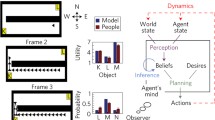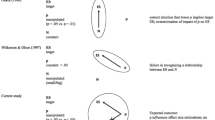Abstract
The use of the concept of plausibility is proposed for the comparison of psychological or physical images of an object with extremely complex structure. This concept helps the process of developing new image of an object that is not captured by the past observational data. It is argued that this process is the essential aspect of statistical thinking developed by original thinkers in various fields of scientific research with the aid of a model. The use of plausibility helps this process of thinking. A practical example is given by the analysis of golf swing motion.
Similar content being viewed by others
References
Akaike, H. (1973). Information theory and an extension of the maximum likelihood principle. In B. N. Petrov, F. Csaki (Eds.), Proceedings of the second international symposium on information theory (pp. 267–281). Budapest: Akademiai Kiado.
Akaike, H. (1997). On the role of statistical reasoning in the process of identification. In Y. Sawaragi, S. Sagara (Eds.), SYSID’97’ 11th IFAC symposium on system identification (Vol. 1, pp. 1–8). International federation of automatic control. New York: Pergamon Press.
Akaike H. (2001) Golf swing analysis: An experiment on the use of verbal analysis in statistical reasoning. Annals of the Institute of Statistical Mathematics 53: 1–10
Boltzmann, L. (1878). Weitere Bemerkungen uber einige Probleme der mecahnischen Warmethorie. Wissenschaftliche Abhandlungen von Ludwig Boltzmann Band II (pp. 250–288). New York: Chelsea Publishing Company.
Boltzmann, L. (1902). Model. In B. Mc Guinness (Ed.), Encyclopedia Britanica (10th ed.). English translation included in Ludwig Boltzmann theoretical physics and philosophical problems (1974). Dordrecht: D. Reidel Publishing Company.
Buchler, J. (Ed.). (1955). Philosophical writings of Pierce. New York: Dover.
Fisher R.A. (1922) On the mathematical foundations of theoretical statistics. Philosophical Transactions of the Royal Society of London 222: 309–368
Floyd, R. T., Thompson, C. W. (1998). Manual of structural kinesiology (13th ed.). Singapore: WCB/McGraw-Hill.
Hadamard, J. (1996). The mathematician’s mind. USA: Princeton University Press, Princeton Science Library.
Merton R.K., Barber E. (2004) The travels and adventures of serendipity. Princeton University Press, Princeton
Author information
Authors and Affiliations
Corresponding author
Additional information
This paper is a completely revised version of a paper presented at the International Symposium on Skill Science 2007, held at Keio University, Tokyo, on September 18, 2007, under the title “Statistical Thinking and Golf Swing Analysis”.
About this article
Cite this article
Akaike, H. Making statistical thinking more productive. Ann Inst Stat Math 62, 3–9 (2010). https://doi.org/10.1007/s10463-009-0238-0
Received:
Revised:
Published:
Issue Date:
DOI: https://doi.org/10.1007/s10463-009-0238-0




